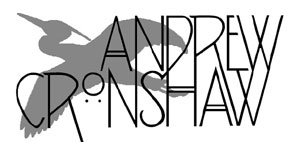
- Andrew Cronshaw website -
- Andrew Cronshaw MySpace -
- Cloud Valley Music website -
- Andrew Cronshaw website -
- Andrew Cronshaw MySpace -
- Back to Reviews Introduction page -
Written in fRoots issue 228, 2002
VARIOUS
Kosovo Roma Nika/Arhefon AF01
A fascinating and invigorating set of very live field recordings made by
Svanibor Pettan between 1984-1991 in the then multi-ethnic Kosovo, where Roma
were generally despised but their musicians were appreciated, adapting and
utilising all the musical forms that came their way.
The first batch was recorded at social events, all of it lively: wild shawms,
drums, saxes, clarinet, flugelhorn and accordions from wedding bands, women
accompanying themselves on big tambourines, screaming amplified band of sax,
synth, electric guitar and drums playing for the dancing in the street to
celebrate a circumcision.
Then comes Roma music for Roma: a solo vocal lament, a Dervish leader singing
with his boy pupils, more singers with tambourines with talava music, a genre
with Albanian words and Rom rhythms that metamorphosed around the 1980s into an
amplified dance music form, of which there’s an examples here too, with synth,
electric guitar and bass and drumkit (which, unless there’s an unmentioned
darabukka player, seems to be generally used tight-tuned without snares, giving
a fast-rolling, pattering darabukka sort of sound). This new-style talava music
linked up with the music of Ferus Mustafov and others across the border in
Macedonia; there’s a track from Macedonian clarinettist Tunan Kurtišev and his
band.
Further illustrating the multi-ethnicity of the people and their music, a group
of women with tambourines in Prizren are recorded singing a sequence of songs
switching languages between Albanian, Serbian and the Goranci dialect of ethnic
Muslims, and elementary school teacher Ahmet Kalo sings with a Turkish wedding
ensemble of clarinet, electric sazes and drum, the musicians seated round the
food-spread wedding table.
Music from the Indian films shown in Kosovo cinemas is grist to the mill, too,
here given Gypsy fast-paced zing and instrumentally modified to suit Agim
Hadri’s ensemble of electric accordion with cheesy-organ sound, cumbus and
drumkit by, but sung by Faton Lubunari still in Hindi. Not just Indian films,
either - there’s a song from the same band in praise of Dynasty’s Alexis. The CD
(which is CD-ROM enhanced with photos, video, lyrics and two of Svanibor
Pettan’s articles) ends with two versions of the lambada tune Llorando Se Fue.
Both are far removed from Costa-MOR, one played on two shawms and two tapan
drums segue-ing into a high-note screaming rendition of Ederlezi (here
titled Herdelezi), the other, with extemporising and fast ornamentations
played by Burim Hadri, who manages to instil that wild and honky Gypsy sound
into even his electronic keyboard-generated drums and Roland SH101 mono-synth,
held upright like his father Agim holds his electric accordion.
Pettan uses the past tense in describing the music and social occasions in his
liner notes, written ten years and a Kosovo nightmare after the last of his
recordings. Where are these people, their music and social gatherings now, one
wonders. Surviving somewhere, perhaps, as “economic migrants”.
© 2002 Andrew Cronshaw
You're welcome to quote from reviews on this site, but please credit the writer
and fRoots.
Links:
fRoots - The feature and
review-packed UK-based monthly world roots music magazine in which these reviews
were published, and by whose permission they're reproduced here.
It's not practical to give, and keep up to date,
current contact details and sales sources for all the artists and labels in
these reviews, but try Googling for them, and where possible buy direct from the
artists.
CDRoots.com in the USA, run by
Cliff Furnald, is a reliable and independent online retail source, with reviews,
of many of the CDs in these reviews; it's connected to his excellent online magazine
Rootsworld.com
For more reviews click on the regions below
NORDIC
BALTIC
IBERIA (& islands)
CENTRAL & EASTERN EUROPE, & CAUCASUS
OTHER EUROPEAN AMERICAS OTHER, AND WORLD IN GENERAL
- Back to Reviews Introduction page -